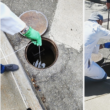Defining legal boundaries for incapacitating weapons
By Ralf Trapp, June 3, 2008
Pal Aas queried my statement that the issue of incapacitants is not primarily about new science but about legal boundaries. Let me clarify what I meant:
Attempts to develop incapacitating agents with predictable effect and a sufficiently wide safety margin (i.e. a low incapacitating dose and a high lethal dose) are not new. What is new is that advances in the life sciences make it more likely that researchers will find new candidates for such chemical agents. This list of new candidates may include compounds that interact more selectively with specific receptor sites or those that deliver agents more selectively to their targets.
The problem posed by these possible agents is not the underlying science–any such new agent would be covered under the prohibitions of the Chemical Weapons Convention (CWC) if it were used as a chemical weapon. But can these agents be weaponized for law enforcement purposes? The answer has little to do with the chemical itself, or the science behind it. Instead, it is a matter of legal interpretation and of acceptance by the States Parties of the CWC: What does the law enforcement clause allow them to do? This question needs to be answered, even without new scientific discoveries.
This isn't to diminish the role science plays. Science is important, if only because it appears to promise the discovery of more, better candidate chemicals that could be developed into law enforcement weapons.
Topics: Biosecurity
Share: [addthis tool="addthis_inline_share_toolbox"]














